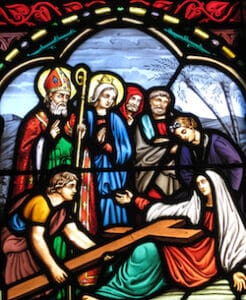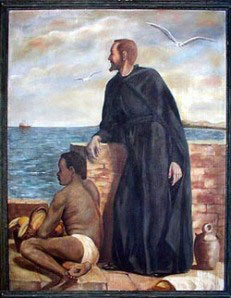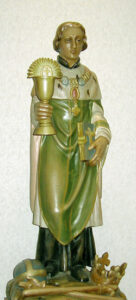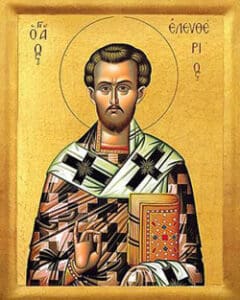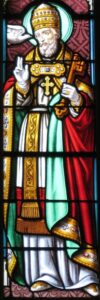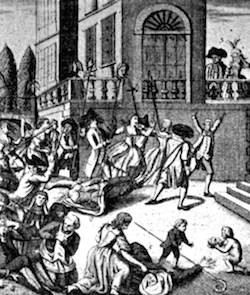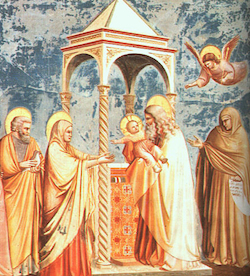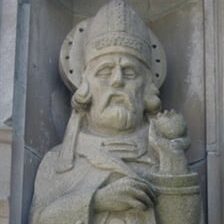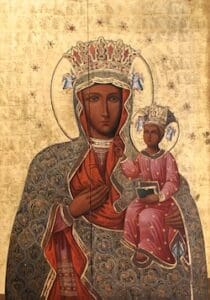

St. Erasmus, whose name morphed into St. Elmo as it was passed along, is patron saint of those suffering from abdominal pain because he was martyred by being disemboweled.
In the late second century, he was a bishop of Formia, which sits between Rome and Naples. When that city burned, he moved to the nearby town of Gaeta, and he remains the city’s patron. Both Formia and Gaeta sit on the west coast of Italy, and St. Erasmus was invoked by sailors who frequented their ports—today he is patron saint of those who make their living at sea.
During storms at sea, sailors noticed a blue electrical discharges dancing in their rigging and masts, and took it as a sign of St. Erasmus’ protection. Given the evolution of his name, we know this today as St. Elmo’s fire.
A number of unreliable legends fill in Erasmus’ story. They tell of him fleeing a persecution of Christians and living on a mountain and being sustained by food delivered by a raven. He was later discovered, arrested, and tortured, but survived by several miraculous escapes.
It was believed he eventually died by disembowelment, so he is invoked by women in labor and those experiencing intestinal disorders, including appendicitis. As is the case with many martyrs, he is depicted here holding the instrument of his death, a windlass around which is wound his intestines.
St. Erasmus is considered one of the Fourteen Holy Helpers—a band of saints whose intercession was asked for around the time of the bubonic plague. Relics of St. Erasmus rest in the reliquary chapel in the Basilica.
St. Erasmus, patron of those experiencing intestinal disorders and women in labor, pray for us!











